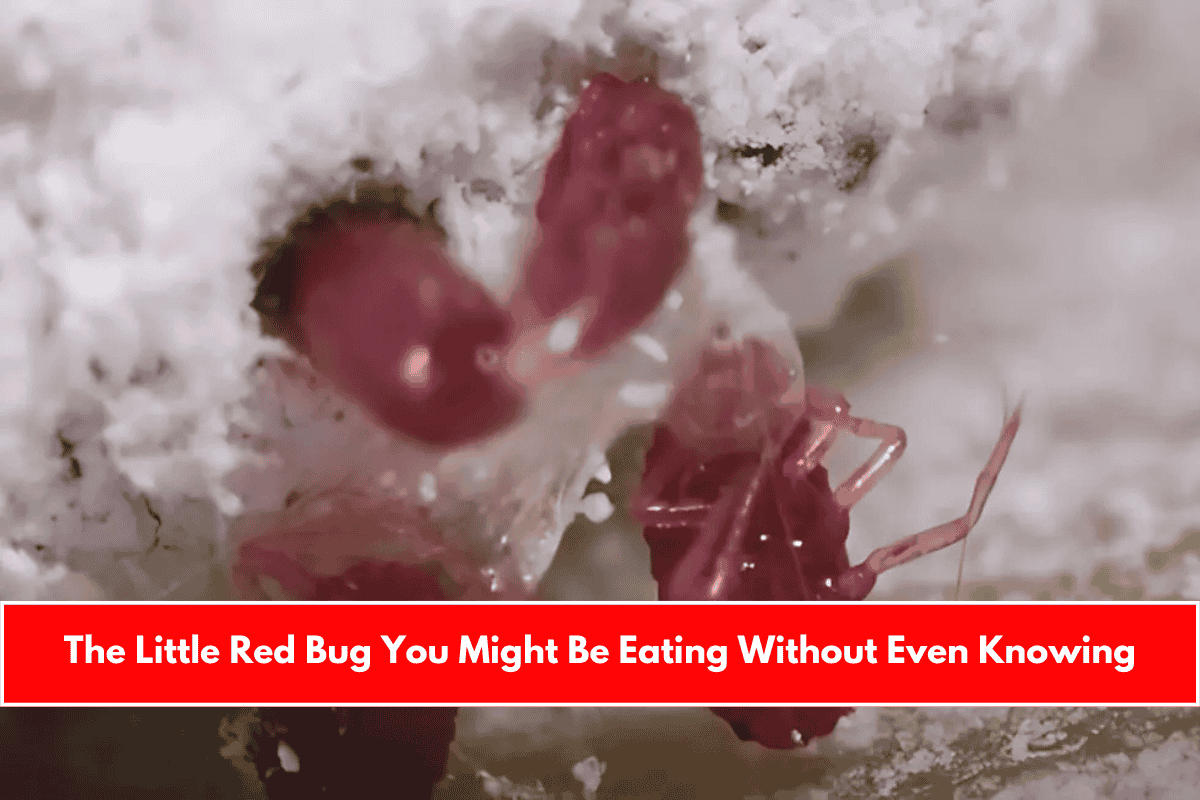You might not know it, but there’s a good chance you’ve been eating a tiny insect—and not by accident. This little red bug plays a big role in making some of our food look more attractive.
If you enjoy red or pink-colored treats like cakes, jams, candies, or even certain drinks, this bug may be part of the recipe.
Sounds strange? You’re not alone. Many people are surprised—or even shocked—when they first learn about it.
What Is a Cochineal Bug?
The insect is called the cochineal. It’s a tiny, oval-shaped bug, only about 0.2 inches long. It lives on cactus plants and has been used for centuries to make natural red dye.
According to Smithsonian Magazine, dried cochineal insects are processed to make carmine or cochineal extract. These dyes get their bright red color from a substance in the bug’s body called carminic acid.
That’s right—this bug is crushed and turned into coloring for food, makeup, and even clothes.
Where Is Cochineal Found?
You might find cochineal dye in:
- Red or pink cakes and frostings
- Licorice and red candy
- Jams, jellies, and canned cherries
- Some yogurts, fruit drinks, and ice creams
Even popular brands and restaurants, including Starbucks, once used this dye. Although Starbucks stopped using it in 2022, it’s still used in many other food and cosmetic products around the world.
Why Use Bugs in Food?
It might sound gross at first, but there’s a reason people use cochineal dye. It’s natural, which means it doesn’t contain harsh chemicals like some synthetic dyes do.
Synthetic dyes are man-made and can sometimes cause allergic reactions or other health concerns. That’s why some people—and even some companies—prefer to use natural dyes made from bugs.
Cochineal has been used safely for hundreds of years, and it gives foods a rich, red color without using artificial ingredients.
Natural vs Synthetic Dyes: Which Is Better?
It depends on what you care about most. If you want to avoid chemicals, cochineal might sound like the better choice—even if it’s made from bugs. But if you’re vegetarian, vegan, or simply not okay with eating insects, you might want to skip it.
Reading labels can help. Look for ingredients like “cochineal extract,” “carmine,” or “E120” to see if the product contains insect-based dye.
Should You Be Worried?
Probably not. The FDA considers cochineal and carmine to be safe for most people. But it’s still good to know what’s going into your food. Whether you keep eating it or not is totally up to you. Just don’t be too surprised the next time you see that shiny red frosting—it might not be from strawberries!











Leave a Reply